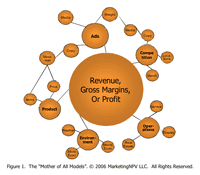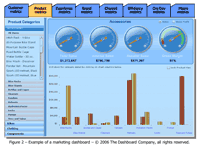By now, most marketers are clear on the need to improve their marketing effectiveness measurement. Unfortunately, the question of how still lingers broadly.
Generally speaking, there are two ways to approach the challenge. The first is with analytics–using advanced mathematics to build regression or artificial-intelligence models to identify causal links between marketing spend and business results (sales, leads, etc.). This can be a very effective approach when there are plenty of data sources to mash together and a strong technical skill-set resident within the marketing department to ensure the validity and continued reliability of the models.
Unfortunately, these data-driven solutions aren’t an option for many marketers. When sales are made through channel partners or distributors, visibility to the end user isn’t nearly as clear and data integrity often suffers. More commonly, companies with direct-to-customer businesses just don’t have the systems capability to produce the right kind of historical transaction data to make the links between prior marketing investments and sales. In some cases, particularly those where there’s not a sufficiently robust variation in marketing tactics by geography or by customer segment, it can be difficult to tease the “drivers” out of the data that is available. Finally, it’s often difficult to incorporate into any single analytical model all the many dimensions of marketing effectiveness without creating “math soup”.
Click image to see larger
While analytical approaches are part of any marketing measurement solution, there are other ways of answering the question of what we’re getting for our marketing investments. Marketing dashboards, for example, are gaining in credibility amongst the analytically-challenged as a way of assembling and presenting the “preponderance of evidence” with respect to marketing effectiveness.
Briefly, a marketing dashboard is a collection of what are believed to be the most critical diagnostic and predictive metrics, organized in a way to promote the recognition of patterns of performance. In the Figure 2 below, the metrics are organized into eight “families”—customer, product, experience, brand, channels, efficiency, organizational development, and macro-environmental. Click on any one tab and you would see the three, four, or perhaps five key metrics pertaining to that general aspect of marketing performance – with the data sliced and diced by geography, business unit, market segment, or any combination thereof.
Click image to see larger
But how do you get to the “right metrics” and what are the elements of an effective marketing dashboard?
Five Keys to an Effective Dashboard
There are five important considerations in the design and implementation of a marketing dashboard that will put you on a solid foundation for success. They are:
- Building cross-functional alignment on the role of marketing in the organization.
- Mapping the knowledge base to identify possible critical metrics.
- Providing a financial (versus purely strategic) framework for bridging short- and long-term results from marketing investments.
- Building a comprehensive brand scorecard.
- Designing a highly engaging user interface.
Let’s take them one by one and understand the importance of each in the context of the whole solution. This week, we’ll examine the first. The second through fifth will appear in upcoming issues.
Building Cross-Functional Alignment on the Role of Marketing
What is the role of marketing in your company? Is it:
- Generating leads or traffic?
- Building and leveraging strong brands?
- Establishing compelling value propositions?
- Enhancing customer satisfaction and loyalty?
- Creating effective communications?
- Driving product innovation?
- All of the above and more?
>Assuming you can answer the question with a fair degree of specificity (something that even CMOs occasionally struggle with), how likely is it that your CEO would provide the same answer, prioritized in the same way, if she were asked? What about your CFO? Or the EVP’s of sales or operations?
If the alignment amongst the senior management team isn’t tight with respect to the specific role of marketing, then neither are their expectations or definitions of “success”. And without that alignment of expectations, how can you possibly measure such subjective concepts as marketing effectiveness or efficiency? Short answer: you can’t. If you don’t know how to define the role of marketing, you don’t know what to measure.
As much as you may want to have this discussion just between you and the CEO, the reality is that all the other members of the executive committee have influence over how resources are allocated to marketing. Their collective confidence that marketing is focused on the right things and executing in the right ways is critically important to determining what the right “evidence” would look like. The CEO may be the judge, but this is the jury of your peers and their opinions are equally (if not occasionally more) important. Besides, you’re going to need to establish all the credibility you can to gain acceptance to the many assumptions you’ll be forced to make.
At its root, marketing measurement requires a significant number of assumptions to be made. Assumptions about the impact of brands on customer purchases; about the links between marketing activity and sales activity; about the effect direct mail has when timed to coincide with channel promotions. You get the idea.
Some of these assumptions can, over time, be rigorously tested and replaced with hard facts. Others are more fundamental. Regardless, the processes you use to make your assumptions should be built through consultation with other functional stakeholders. Once asked to contribute their perspective, they will feel a higher sense of ownership for the outcome and perhaps even be forced to admit (at least to themselves) that they don’t really know how to do it better. All this works to build credibility into your measurement approach.
Soon, you’ll be proposing what you believe are the right metrics by which to gauge marketing effectiveness and efficiency. Safe to say they won’t all be intuitively obvious choices, or even clearly understood by your peer constituents in other functions. Laying a foundation of alignment, credibility, and trust will go a long way towards buying you the latitude you’ll need to progress towards predictive insights over time. The effort you invest at this stage tends to pay back in multiples with respect to the time you’ll save later defending both your methodology and your conclusions.
Pat LaPointe is Managing Partner at MarketingNPV (www.marketingnpv.com) – a consulting firm that builds marketing measurement frameworks, analytical processes, and marketing dashboards for Global 1000 companies across industries. He is also the author of Marketing by the Dashboard Light. How to Get More Insight, Foresight, and Accountability from Your Marketing Investments.





